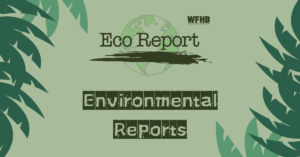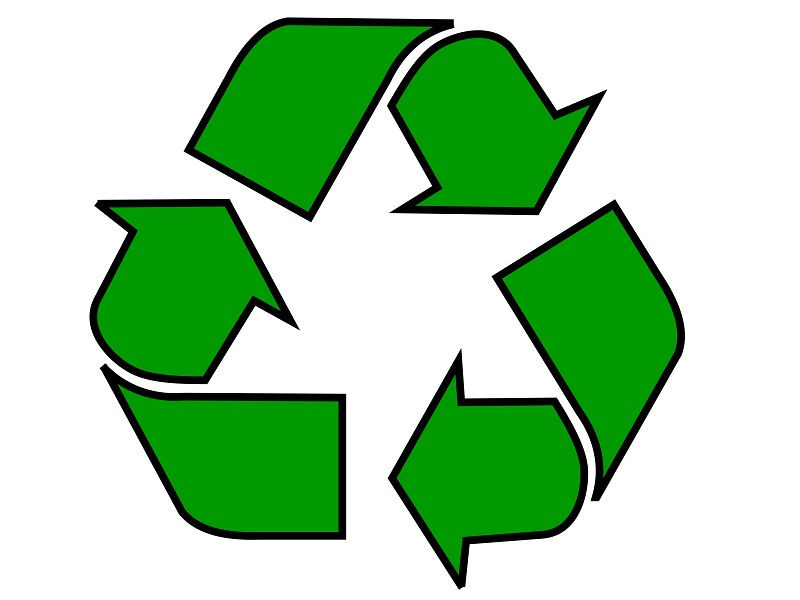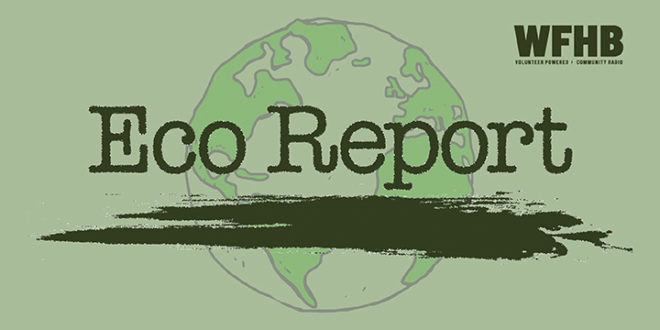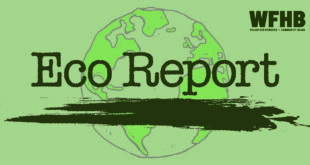Podcast: Play in new window | Download (Duration: 30:51 — 28.3MB)
In this week’s Eco Report feature, WFHB Environmental Correspondent Robert Shull speaks with Dan Vest, Monroe County Animal Management Officer, about animal control, what his job entails and how much he loves his job.

PFAS, per- and polyfluoroalkyl substances commonly called “forever chemicals” are toxic chemicals that are dangerous to human health, accumulate in nature and people’s bodies, and take thousands of years to break down. You probably have some in your home and don’t realize it. If you have a non-stick skillet or pan, then you have PFAS in your home and when you use that pan, some of the chemicals come off into your food and then into you.
Despite that near universal acknowledgement, Hoosier lawmakers are advancing a bill to change the definition of PFAS – but only in Indiana. In other words, chemicals deemed harmful in every other state will no longer be considered dangerous in Indiana. In fact, Indiana is already one of the country’s most polluted states, according to the federal EPA data. “This bill makes no sense at all, said Gretchen Salter, a strategic advisor for Safer States. I don’t know why anyone would want to limit a state’s authority to regulate chemicals that the world has recognized are toxic and harmful to the public.”
Proponents of House Bill 1399, including the chemical manufacturing industry, say the change is needed to preserve essential uses of PFAS in items such as medical devices or semiconductors. No one in Indiana, however, is proposing to prohibit those uses. Advocates that work closely on PFAS issues say the new bill, authored by Rep. Shane Lindauer, R, from Jasper, is part of a national push to change the definition of PFAS so certain manufacturers can continue using them in their products. University of Notre Dame professor Graham Peaslee, a nationally recognized PFAS expert said, “I’ve never met a good PFAS.” The bill passed out of the House by a 64-30 vote along party lines. Now in the Senate, it has been referred to the Environmental Committee but has yet to be scheduled for a hearing.
Straight Arrow News reports that February is on track to become the ninth month in a row with record-breaking temperatures, creating concerns for the health of the planet. In the Florida Keys, rising marine temperatures have been bleaching coral reefs. High temperatures in the summer of 2023 caused so much damage that the National Oceanic and Atmospheric Administration (NOAA) added three more levels to a two-level alert system to measure the impact. Per the new alert system, the Florida Keys hit alert levels four and five last summer, warning of the potential for near complete coral mortality. Delicate coral conservation nurseries had to be evacuated from the ocean and installed in extensive land-based operations.
Ocean temperatures reached triple digits in some areas and didn’t cool down enough to reinstall the coral nurseries until late October. In a recent NOAA survey of five coral restoration sites off the Florida Keys, several important corals were either completely decimated or barely found. NOAA and Florida Keys National Marine Sanctuary created Mission: Iconic Reefs Research and Monitoring. For this project, a team of researchers took a survey vessel through the Florida Keys looking for elkhorn and staghorn corals. “This certainly did feel like a step back,” Mission: Iconic Reefs Monitoring Coordinator Katey Lesneski said. Many of the corals that we did survey are those that are part of reef restoration.”
According to Lesneski, healthy elkhorn and staghorn corals are typically a tan, orange, brown color. On the research team’s journey to Key West, it came across multiple colonies of coral that had not been alive for months. Fewer than 22% of staghorn corals survived, and those that did were only found in the two northernmost sites. The Looe Key Reef in the lower Florida keys had no live staghorn or elkhorn corals. There is a good possibility that the summer of 2024 will resemble 2023, and destroy the surviving corals. Perhaps the only option is to plant the rescued corals in cooler waters.
In a couple of decades, when you go to the grocery store, you’ll have a choice to make in the seafood isle. There will be no cod, halibut, Pollock, haddock, snow crab, for sale. Farmed lobster will cost $50/lb. The salmon will be all farmed. There is now farm-raised tilapia, carp, mussels and catfish. In the year 1400, Portuguese fishermen were fishing in the North Atlantic. The approach was to wrap the fishing line around an arm, and drop the line overboard. It wasn’t long before they pulled in a 40lb codfish. When the day was over, he’d caught over 1,000 lb of codfish – each over 30 lb.
More recently, fishing ships from England fished east of Newfoundland. During winter, the cod move out of the depths, and are more easily caught. Fishing during winter was risky because of fierce storms that coated the ship with ice and made it top-heavy. Thousands of fishermen died when the boat tipped over. Many did not remove their boots in the water because they wanted to get the dying over quickly. Still the lucrative fishing continued. Many of the great mansions in England were built with the income from cod fishing. There were billions of cod.
By the early 1800s, fishing switched to the U.S. and Gloucester (pronounced Glawster) Massachusetts. It became the primary fishing port in the world, a position it held for more than 150 years. There were billions of fish within 20 miles of Gloucester. The fishing approach was for the mother-ship dropping off several small boats with one or two fisherman on each. Many fished with a “long-line”, and many hooks. Cod are not a fighting fish, so it was easy to bring a 30 lb-er. Every year, Gloucester would lose a few thousand fishermen at sea. Many homes in Gloucester still have a walkway at the top of the house. This was called a “widows walk” so the women could get an early glimpse of the horizon to see if their man made it back. The ships were constructed in towns near Gloucester, Essex being the major location. A lot of the forests in New England were sourced for lumber.
By the 1880s the fleet had expanded to where if you had just the halibut boats lined up bow-to-stern, a line 3 miles long would have been the result. A few of the halibut reached 500 lb and looked more like a manta ray. But the catch could not be maintained and yearly takes dropped year after year. There were an equal number of boats pursuing cod. As soon as the boats filled with cod, they would race to either Gloucester or Boston to sell their catch. Since they only had ice to preserve their catch, it was important to get the fish to market as quickly as possible. Next week, two discoveries changed fishing forever, beginning the long decline of all the oceans.
 Are you one of those people who believes our Mother Earth is getting dirtier and dirtier from all our trash? Here are a few tips to help keep the Earth cleaner. Stop buying Styrofoam items. Styrofoam is forever. It is not biodegradable, so instead invest in some reusable mugs that you can take with you. Do you like to eat salmon? Several studies have found that PCB’s, which is a class of toxic chemicals, and other environmental toxins are present at higher levels in farm raised salmon than wild salmon. Look for safe seafood when shopping for salmon. What about those coffee filters? Are you a coffee drinker? Dioxins, chemicals formed during the chlorine bleaching process, contaminate groundwater and air and are linked to cancer. Start buying unbleached paper filters or use reusable filters.
Are you one of those people who believes our Mother Earth is getting dirtier and dirtier from all our trash? Here are a few tips to help keep the Earth cleaner. Stop buying Styrofoam items. Styrofoam is forever. It is not biodegradable, so instead invest in some reusable mugs that you can take with you. Do you like to eat salmon? Several studies have found that PCB’s, which is a class of toxic chemicals, and other environmental toxins are present at higher levels in farm raised salmon than wild salmon. Look for safe seafood when shopping for salmon. What about those coffee filters? Are you a coffee drinker? Dioxins, chemicals formed during the chlorine bleaching process, contaminate groundwater and air and are linked to cancer. Start buying unbleached paper filters or use reusable filters.
We all love to go to picnics, especially when the weather is nice. The next time you host or attend a picnic, bring your own utensils and food containers. Plastic forks, spoons, straws, and all that plastic stuff you see at a picnic are not biodegradable and not recyclable. One more thing you might want to stop using is paper towels. Regular paper towels are bleached, and waste forest resources and landfill space. Look for recycled, non-bleached paper towels or better yet, buy dishtowels or rags to wash and reuse. Keep looking for ways you can make a difference.

This week’s Eco Report feature is a conversation between WFHB Environmental Correspondent Robert Shull and Dan Vest at the Monroe County Animal Management office where we learn all about Dan’s love for his job, animal management and much more.

-
Finish up the Brown County Winter Hike Series with a Brown County Dog Hike on Saturday, March 3rd, from 11 am to 12:30 pm. Meet at the Ogla Lake Parking lot for a moderate hike on Trail 7. Your dog much be on a six-foot leash.
-
Join a Roving Naturalist on Saturday, March 9th, from 12:30 to 2:30 pm at Griffy Lake Nature Preserve for a Signs of Spring Hike. You will open your senses as you look for signs of the changing seasons. Dress for the weather and wear comfortable shoes. Register at bloomington.in.gov/parks.
-
Join Anthony for a Donaldson Cave Hike at Spring Mill State Park on Saturday, March 9th, from 1 to 2 pm. You will hike into the upper dry portion of Donaldson Cave as you learn about the eccentric Scotsman the cave is named for and the Shawnee Cave system. Meet at the Sycamore Shelter.
-
The Sassafras Audubon Society is hosting their Semi-Annual Ducks and Donuts gathering at the Stillwater Marsh observation platform on Saturday, March 9th, from 9 am to noon. Come and enjoy coffee, donuts and binoculars to spot ducks and other birds.
-
Goose Pond Fish and Wildlife Area is hosting a Goose Pond Reads event on Saturday, March 9th, from 9 to 10 am. Enjoy a free community reading from A Sand County Almanac by Aldo Leopold. Sit in the Visitors Center as you listen and enjoy the panoramic view of the wetlands.
Credits:
This week’s headlines were written by Norm Holy and Julianna Dailey.
Today’s news feature was produced Robert Shull and edited by Kade Young.
Julianna Dailey assembled the script which was edited by the Eco Report team.
Julianna Dailey compiled our events calendar.
Kade Young and Noelle Herhusky-Schneider produced today’s show.
Branden Blewett is our engineer.
Anchors are Julianna Dailey and Cynthia Roberts.
 WFHB Bloomington Community Radio
WFHB Bloomington Community Radio


